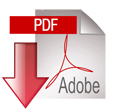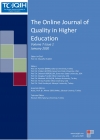TOJQIH - Volume 3 - Issue 3 - July 2016
 A COMPARATIVE LOOK AT DESIGN STUDIO IN USA AND TURKEY
A COMPARATIVE LOOK AT DESIGN STUDIO IN USA AND TURKEY Levent Kara
Abstract:
Despite widespread availability of information across the world, immediate
distribution and availability of various media on architecture and its education, certain
local realities are highly effective in shaping the design education in Turkey. Having
taught architectural design both in USA and Turkey during my 15 years of teaching, I
come to observe that pedagogical differences in design studio are strongly tied not only
to the general architectural culture and practices of built environment in two countries,
but they are actually shaped by deep underlying attitudes to research and
experimentation, thus knowledge production and larger educational system in general.
Even if there is a certain globalism to architecture in today's world, where common
forms of architecture are produced everywhere in the world, the degree of originality
and innovation shifts dramatically between the professionals of different countries, and
these qualities not only determine the shares of the architectural world market, but also
construct the present discourse on architecture and its education. One of the sobering
observations to be made about architecture in Turkey is that our professionals are not
recognized beyond our borders, and Turkey still suffers from the lack of a strong
architectural culture beyond a very limited number of universities. Based on personal
experience of being an educator in both countries since 1999, I will identify the
differences in architectural education, specifically in design studio, and tie these
findings to practices of built environment and broader cultural attitudes towards
knowledge production in the two countries.
 A KEY STUDY FROM TURKEY: NECESSITY OF MODIFICATION IN EDUACATION AT COMMUNICATION FACULTIES WITHIN THE CONTEXT OF DIGITALIZED STUDENT IDENTITY
A KEY STUDY FROM TURKEY: NECESSITY OF MODIFICATION IN EDUACATION AT COMMUNICATION FACULTIES WITHIN THE CONTEXT OF DIGITALIZED STUDENT IDENTITY Burcu AKKAYA TELCÄ°
Abstract:
Digital media, smart phones and tablets have become an inseparable part of
people’s daily life. Producing knowledge, communication and getting information has
become easier but at the same time, the reality and trueness of these became a
discussion subject. Students can get any information through the internet; they can reach
data fast and copy paste. Therefore, this is why creativity and individuality of papers
and projects have to be queried. Academicians, lecturers have to use technology better
than ever and almost have to become a specialist in technology.
Digital students like to watch and record. They almost never write; they just take photos
of the subjects. In this kind of education model, something has to change in terms of
quality. Needs of today's journalism classrooms are different from the past. Teachers
have to change their teaching ways from classical models to more interactive and
multimedia user concepts.
New generation is growing up in a digital media age; they socialize and cultivate
themselves by user-friendly applications. This situation causes the generation to get
used to an easier life. Lean back and wait to be taught without any effort. Consumption
culture is propping stolidity even in learning practices. In this case, this paper aims to
understand what must be done as modification. A small research is done with 50
students asking what are the three things needed for a quality education. The same
question was also asked to 12 lecturers as a focus group. This paper discusses
advantages and disadvantages of technology for students. The results of the
questionnaire is interesting; it seems need of freedom is more demanded than
technology etc.
 A STUDY ON THE ASSESSMENT OF SEA TRAINING AS AN INTEGRAL PART OF MARITIME EDUCATION AND TRAINING
A STUDY ON THE ASSESSMENT OF SEA TRAINING AS AN INTEGRAL PART OF MARITIME EDUCATION AND TRAINING Ergün DEMİREL, Dinçer BAYER
Abstract:
One of the most prominent objectives of maritime education and training
(MET) is to supply manpower for the shipping industry. MET provides seafarers not
only with theoretical knowledge on maritime issues but also practical training on ship
duties. The sea trainings of cadets are executed in defined periods according to national
and international standards and includes all kind of on-the-job training methods for
ships. This study covers an in-depth investigation of the assessment of the success of
cadets during a sea training. The assessment has been made based on both a final
written exam and additional achievement reports prepared by the lecturers and ship
training staff. The results are tested and verified using empirical methods. This study not
only will help to realize the problem areas in the sea training of MET but also will
provide essential data for the other education models which require on the job training.
 LEARNING TO CODE, CODING TO LEARN THE WORLD OF ALGORITHMS IN HIGHER EDUCATION
LEARNING TO CODE, CODING TO LEARN THE WORLD OF ALGORITHMS IN HIGHER EDUCATION Anton J. Knierzinger, Boyka Gradinarova
Abstract:
Computer and internet give essential features to our life. Should all students
learn programming? The message of this paper is a plea to improve the quality of highes
education via bringing forward the importance of algorithms by stating their role in
different sectors of our society as well as the learning and teaching process. Algorithmic
thinking should be part of all subjects at all levels of education, because it improves the
chances of our students in many directions and reflects the responsibility of education
for our society. But coding in that sense is different from traditional programming.
Teaching coding has three aspects:
• a technical approach - what are we talking about
• a social approach - why are we talking about
• a didactic approach - how are we talking about
 THE EFFECTS OF THE FLIPPED CLASSROOM APPROACH SHOWN IN THE EXAMPLE OF A MASTER COURSE ON MANAGEMENT INFORMATION SYSTEMS
THE EFFECTS OF THE FLIPPED CLASSROOM APPROACH SHOWN IN THE EXAMPLE OF A MASTER COURSE ON MANAGEMENT INFORMATION SYSTEMS Alptekin Erkollar, Birgit Oberer
Abstract:
Technology also has the ability to change the dynamics of time and space in
higher education institutions. Education technology is increasingly important in light of
the changed learning needs and styles of today’s students. Today’s students are growing
up in a digital world and are masters of technology. The flipped classroom is a
pedagogical method in which the typical lecture and homework elements of a course are
reversed. The value of a flipped class is in using class time as a workshop environment
where students can inquire about lecture content, interact with one another in hands on
activities, and test their skills in applying knowledge. In this study the effects of the
flipped classroom were analyzed to measure the impact of the flipped approach on
student achievement. A master course on MIS was redesigned by using flipped
classroom methods, combining short video lectures and in class activities like tutorials
and workshops. Rubrics were created and applied for analyzing students’ performance.
The results of the study revealed that exam performance did not change in a significant
manner, but the overall semester performance, measured in terms of paper, presentation,
case studies and projects, improved significantly for the students attending this master
course.


